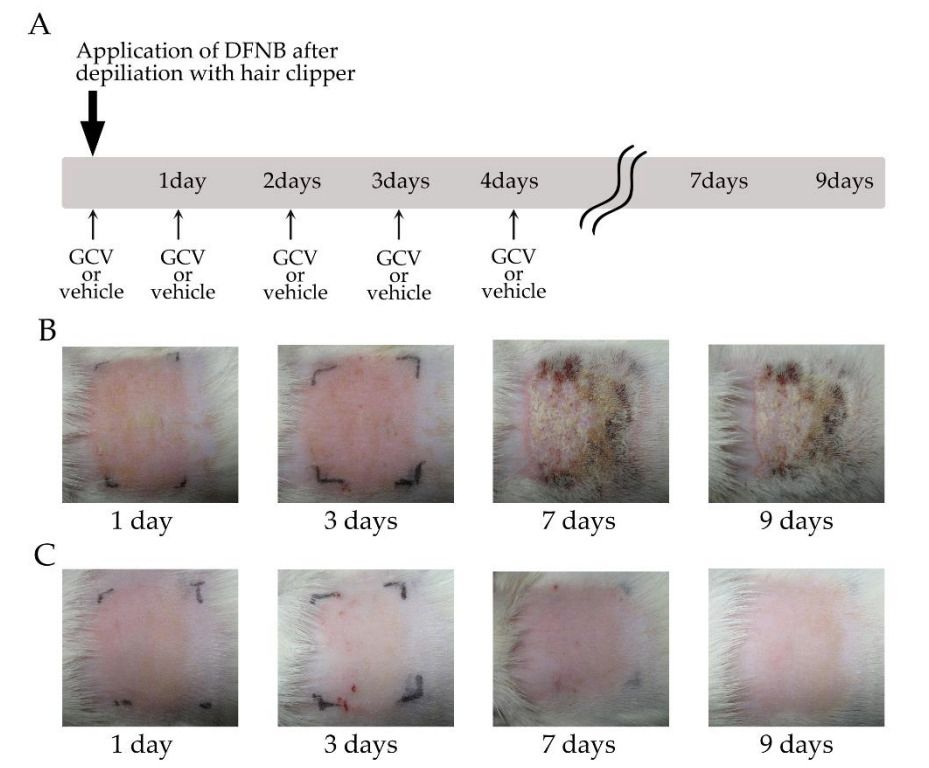Chemical induced Rodent Contact Hypersensitivity Model
Creative Biolabs is one of the most reliable industry leaders professional in developing animal models of human diseases. We provide chemical-induced rodent contact hypersensitivity (CHS) models established with different types of sensitizers, sensitization/challenge schedules and mouse strains for pre-clinical research as well as pathogenesis studies of human allergic contact dermatitis.
Chemical-Induced Rodent Contact Hypersensitivity (CHS) Models
Allergic contact dermatitis (ACD) is a common T-cell mediated skin inflammatory disease in humans. It was caused by repeated skin exposure to contact allergens and is characterized by redness, papule, and vesicles, followed by scaling and dryness. Pathophysiological understanding of ACD is derived from animal models referred to as contact hypersensitivity (CHS), in which the skin inflammation is induced by painting a hapten onto the skin. Commonly used dermal sensitizers to stimulate an acute CHS typically include 2,4,6-trinitrochlorobenzene (TNCB), oxazolone, fluorescein isothiocyanate (FITC) and 2,4-dinitrofluorobenzene (DNFB). These models share many of the features of human allergic contact dermatitis. Specifically, a list of CHS models has been established at Creative Biolabs using different sensitizers, sensitization/challenge schedules and mouse strains.
 Fig. 1 DNBF-induced contact dermatitis. 1
Fig. 1 DNBF-induced contact dermatitis. 1
Description of Chemical-Induced CHS Models
Rodent CHS models are easy to handle, highly reproducible, inexpensive and well characterized. Generally, two distinct phases are necessary to achieve optimal CHS reaction. One is the sensitization phase, also known as afferent or induction phase, which starts with the first contact of skin with hapten. The other is challenge phase, also known as efferent or elicitation phase, which occurs following second hapten contact. While sensitization phase has no clinical manifestations in the majority of cases, challenge of the skin of sensitized individuals leads to local inflammatory reaction.
During the sensitization phase, the hapten triggers danger signals and the release of inflammatory cytokines and is taken up by activated dendritic cells, which migrate to the skin-draining lymph nodes and prime naive T cells. In the elicitation phase, upon re-exposure to the hapten, the allergen-specific T cells are recruited into the skin. The disease becomes manifest because of the cytotoxicity of CD8+ effector T cells and the interaction of recruited inflammatory cells with keratinocytes and stromal cells.
Creative Biolabs provides such assessments as:
- PK/PD Blood Collections
- Clinical Score/Ear Thickness
- Biomarker Analysis
- Histopathologic Evaluation
- Immunohistochemistry
Meanwhile, in order to meet our customers' specific requirements and their various research objectives, Creative Biolabs also offers other rodent inflammatory & immunological disease models listed as follows that you might be interested in:
- Carrageenan Air Pouch Model
- Carrageenan-Induced Paw Edema Model
- Imiquimod (IMQ)-Induced Psoriasis Rodent Model
- Passive Cutaneous Anaphylaxis (PCA) Model
- Delayed Type Hypersensitivity (DTH) Rodent Model
- Adjuvant-Induced Arthritis (AIA) Rodent Model
- Collagen-Induced Arthritis (CIA) Rodent Model
- Collagen Antibody-Induced Arthritis (CAIA) Model
- Cecum Ligation and Puncture (CLP)-Induced Sepsis Model
- LPS-Induced Rodent Sepsis Model
- Spontaneous Systemic Lupus Erythematosus (SLE) Mouse Models
- Induced Models of Systemic Lupus Erythematosus
Creative Biolabs is a leading-industry with high-end technology platforms and seasoned research teams. We are proud to offer cost-effective studies with high-quality and competitive prices. Contact us if you need more information or a formal quote.
Reference
- Tamura, Yasuhisa et al. "Selective Elimination of NG2-Expressing Hair Follicle Stem Cells Exacerbates the Sensitization Phase of Contact Dermatitis in a Transgenic Rat Model." International journal of molecular sciences vol. 21,18 6922. 21 Sep. 2020, doi:10.3390/ijms21186922. Distributed under Open Access license CC BY 4.0, without modification.
For Research Use Only.
